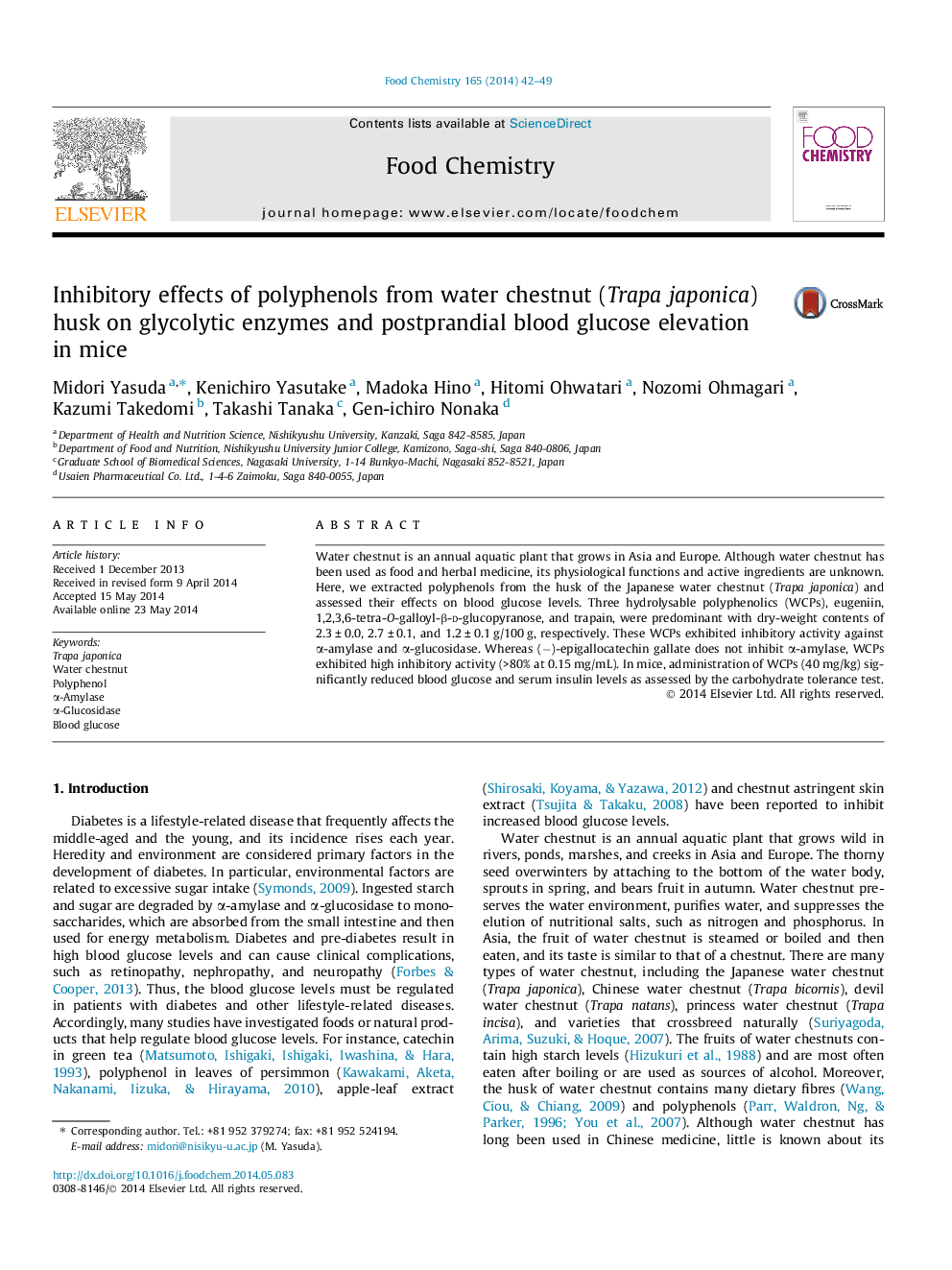| Article ID | Journal | Published Year | Pages | File Type |
|---|---|---|---|---|
| 7595732 | Food Chemistry | 2014 | 8 Pages |
Abstract
Water chestnut is an annual aquatic plant that grows in Asia and Europe. Although water chestnut has been used as food and herbal medicine, its physiological functions and active ingredients are unknown. Here, we extracted polyphenols from the husk of the Japanese water chestnut (Trapa japonica) and assessed their effects on blood glucose levels. Three hydrolysable polyphenolics (WCPs), eugeniin, 1,2,3,6-tetra-O-galloyl-β-d-glucopyranose, and trapain, were predominant with dry-weight contents of 2.3 ± 0.0, 2.7 ± 0.1, and 1.2 ± 0.1 g/100 g, respectively. These WCPs exhibited inhibitory activity against α-amylase and α-glucosidase. Whereas (â)-epigallocatechin gallate does not inhibit α-amylase, WCPs exhibited high inhibitory activity (>80% at 0.15 mg/mL). In mice, administration of WCPs (40 mg/kg) significantly reduced blood glucose and serum insulin levels as assessed by the carbohydrate tolerance test.
Related Topics
Physical Sciences and Engineering
Chemistry
Analytical Chemistry
Authors
Midori Yasuda, Kenichiro Yasutake, Madoka Hino, Hitomi Ohwatari, Nozomi Ohmagari, Kazumi Takedomi, Takashi Tanaka, Gen-ichiro Nonaka,
